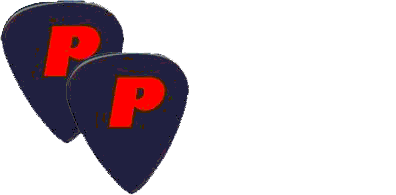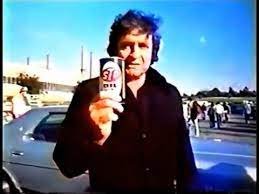Recording in Leon Russell’s Bathroom
Like many artists and studio musicians who worked mundo much in the mid-‘Sixties, Leon Russell was building a recording studio in his home in order to pursue personal musical interests. And, also like many of his associates’ projects, his was a work in progress. Whatever it was, I was thrilled to the marrow to be asked to do a demo there.
Joe Osborne recruited me. Joe was riding as high as a Fender Bass player could in the ‘Sixties and ‘Seventies LA recording scene. He was part of the Wrecking Crew, a studio-musician mafia of a dozen or so guys and one woman (bass guitarist Carol Kaye), who played the songs that made the cash drawer ring. Joe anchored hits by the Mamas and the Papas, the Carpenters (whom he discovered), Simon & Garfunkel, the Fifth Dimension, the Association, Sonny & Cher, Ricky Nelson, and on and on, ad nauseum. Later he went to Nashville and became part of Jimmy Buffet’s success machine.
What’s Your Sign, Li’l Richard?
A loose-limbed, late blooming hippy I met the other nite between sets my band was playing at a diabetes benefit asked me what my sign was. I told her, but I didn’t tell her my famous astrology story. You are not so lucky.
Late one nite, in the summer of 1969, when I was trying to build a reputation for myself as a studio guitarist, I got a call from someone whose voice I did not recognize. This was a little unusual because of what time it was and that it wasn’t a friend. This was in the days before telemarketing and robocalls.
The voice on the other end of the line was Negro, or colored-take your pick: white people didn’t say “Black” in those days and “African-American” was still years away. But the guy’s first few words, and their inflection, “Hey, you Country Al?” said it, for me at least. Plus, as I said, it was very late. Most folks would have been in bed long before that. Sorry if that’s politically incorrect, but this was in the days before that, too, was an issue.
Hangin’ with Johnny Cash and Mother Maybelle Carter
When I went down to Nashville one winter week late last century to produce Johnny Cash for STP, it never occurred to me that I might meet Mother Maybelle Carter, originator of Country Music’s famous Carter Family guitar-strumming style. Even further back in my mind was the possibility I might actually–but I’m getting ahead of myself.
My “Thank You” Ride with Johnny Cash
After making notes every day, one day at a time, in my daybook to remember Johnny Cash’s birthday, it went by yesterday without a post from me. Shit. I’d decided to commemorate him and some time I spent with him in 1978 writing a jingle with a pic of a “One Piece at a Time” postcard and one of the many shirts, T and sweats, he gave me, most of which I then gave away to friends and fellow musicians.
Writing With Johnny Cash
In hindsight, I can see where being able say you wrote a song with Johnny Cash, even if it was for STP motor oil and additives, would look cool on your resume, if not on your tombstone. But it is interesting that it did take hindsight plus the prodding of friends before I did see it, which is a good thing, because if I’d seen it that way when it went down, I might have panicked and maybe choked. Here was the situation, at least as I remember it.
Truckin’ with Jerry / “Driving Lessons”
The first time I saw Jerry Garcia after our Bluegrass days in Berkeley was one nite in his sound truck, parked somewhere in LA, I cannot remember where. My friend, Lonnie Feiner, who had introduced us a couple yrs before that, thinks it was in a scary part of town, which would mean either East LA or Watts (now called South Central). For some reason I think it was in Hollywood. Which, now that I think about, was a scary part of town in ways of its own.
Jerry Garcia & The Missing Finger
My earliest recollections of playing with Jerry Garcia are the informal Bluegrass pickin’ sessions in John and Deirdre Lundburg’s guitar shop on Dwight Way, just off campus, in Berkeley. This would have been around 1962 or 1963. He and I’d been introduced by a mutual friend, Lonnie Feiner, a singer-guitarist from Los Angeles, who seemed to know everyone and was a walking clearing house for people from many different sub-groups in the folk music cosmos of the ‘Sixties.
High and Inside with Doctor John
Wikipedia’s biography of Doctor John, neé Mac Rebennack, says he came to Los Angeles in 1963, so that would have been when I met him for the first time. His arrival was announced with some fanfare, as I recall, because he was supposed to be the embodiment of New Orleans’ musical soul for his generation. I make this point because he brought with him Doctor Professor Longhair, probably in his ‘fifties at the time but looking much more ancient as he poked at the piano with long, spidery fingers and did his hunched-over, venerable genius thing.
“When the Bus Broke Down:” Playing with Bill Monroe
Most professional musicians from a certain era (mine) have all kinds of stories about what happened “when the bus broke down,” i.e., when some of the band didn’t show up for the gig. Playing a set with Bill Monroe, the Father of Bluegrass, is one of mine.
“The Dr. Watson” Sandwich Combo
Sometimes Doc Watson stayed with me when he played at the Ash Grove, which was the top folk music club in L.A. in the ‘Sixties. That’s where you’d play if you were a marquis folk act or were just starting to make it, and Doc was just starting to make it. He had records out and was starting to be hero-worshiped by folkies and serious musicians, like myself. I think the pressure of that caused the ulcer which he had the second time he stayed with me.
Doc-ecdotes
If someone comes into your home a couple of weeks a year for three years in a row, you’re probably going to remember it, and maybe have some lasting memories from it. And so it was with Doc Watson, who stayed with me every time he played at the Ash Grove in LA in the middle ‘Sixties.
[The vinyl album slick (ca. 1966 or thereabouts) pictured here was a token from Doc in lieu of a signature. As I recall, Rosa Lee, his wife, took care of all his correspondence]
Doc Watson, Roy Noble and the Pyschedelic Guitar
Doc Watson was playing at the Ash Grove in LA, probably some time in 1965 or ’66, and one day I took him to Roy Noble’s guitar workshop in Reseda, in the San Fernando Valley. I go 45 years back with Roy, whose guitars have been played and/or owned by Doc, Clarence White, Jorma Kaukkonen, Pete Seeger, Leo Kotke and other awesome players.
Bye Bye-O Doc Bio
Had a good chat with Doc Watson and his wife, Rosa Lee, yesterday. We covered a lot of territory in a half hour: music and musicians, kids, Merlefest, computers (still none at the Watson place,) health, doctors and hospitals (Doc’s salty about some of these; tell you why later), and spirituality. That’s always an important subject whenever we talk.
It took awhile, but we finally made it around to the ostensible reason I’d called him: I’d gotten an email request to interview me for a biography on Doc to be released August 1.
Doc Watson Swings Western
Anyway, something went down between him and Clarence in the middle-‘60’s and Doc found himself a solo act. And that’s where I came in. He stayed at my house, and, in an old guitar mentor-disciple tradition, I was his lead-boy. Among my duties was helping him decide what to play or not play on stage.
Doc Watson in Travel Town
It’s funny what things your memory may log in without asking your permission. For example, in mine there’s a mental snapshot of Doc Watson laying his hands on the driving wheel of a huge old locomotive in an outdoor museum in Los Angles. It reminds me of a teenager caressing a muscle car.
Doctor Watson’s Workshop
For someone who has made his living off a guitar style he invented, Doc Watson has been extremely generous in showing it to others. For the first few years he stayed with me, which was whenever he came to LA, he allowed me to tape him in informal pickin’ sessions where anyone I wanted could show up, gape and learn (as long as I wanted them there).
Backing Up Janis from the Gallery
I “met” Janis Joplin, for the second time, at the Cabale, a coffee house on, I think, San Pedro Street in Berkeley, sometime in the winter of 1963. I put “met” in quotes because I didn’t really have an exchange with her, at least at first, since she was onstage and I was in the audience. However, by the end of the night I was playing backup guitar for her, an honor I bestowed on myself with a stunt of real musical sleaze.
Pleased ta Meetcha, Janis
The first time I remember meeting Janis Joplin was in the winter of 1963 during a dope break on the sidewalk outside The Cabale, a Berkeley coffee house where my bluegrass band, The Ridgerunners, was playing. This was before she was known to more than a tiny handful of people who themselves had just met her.


















